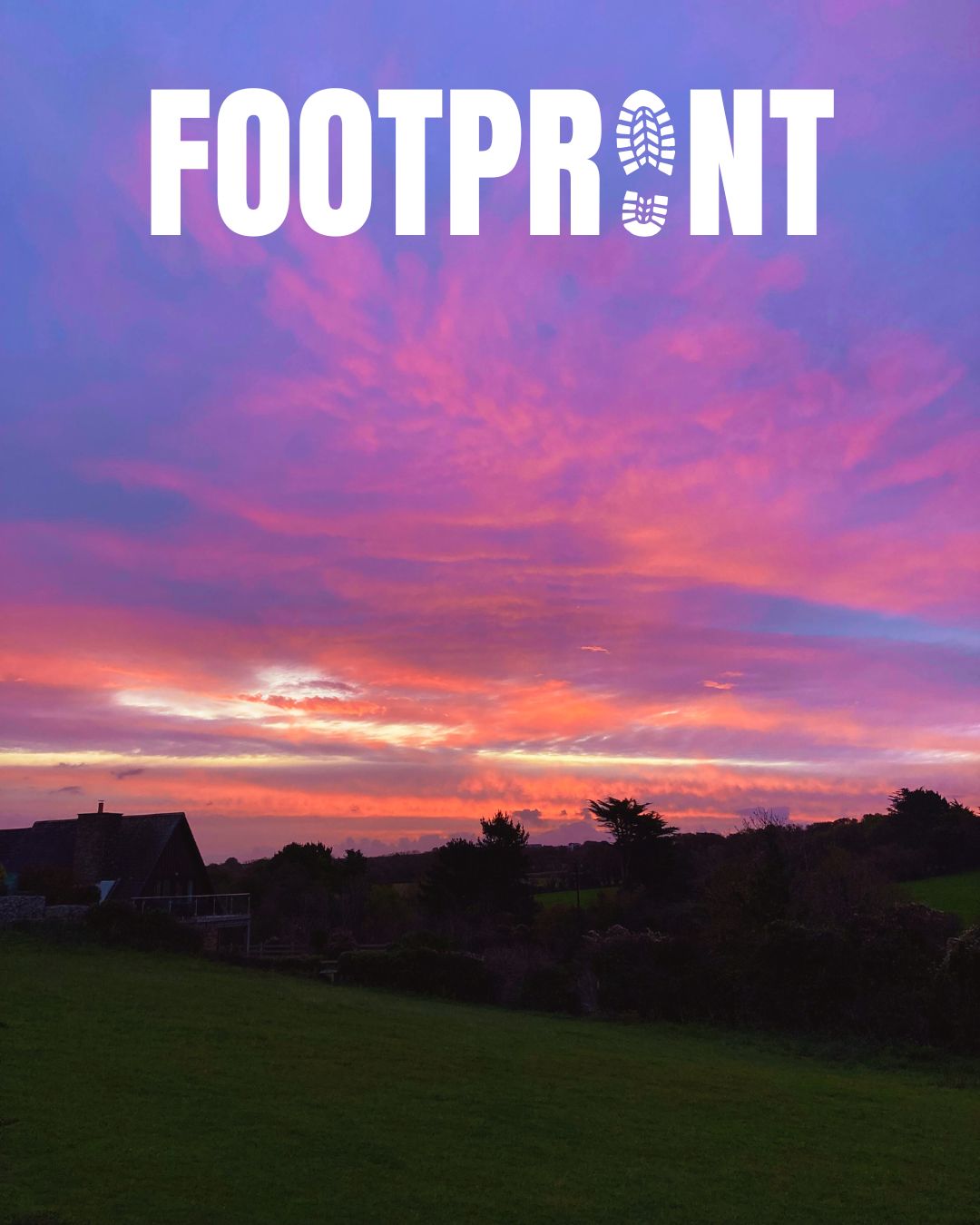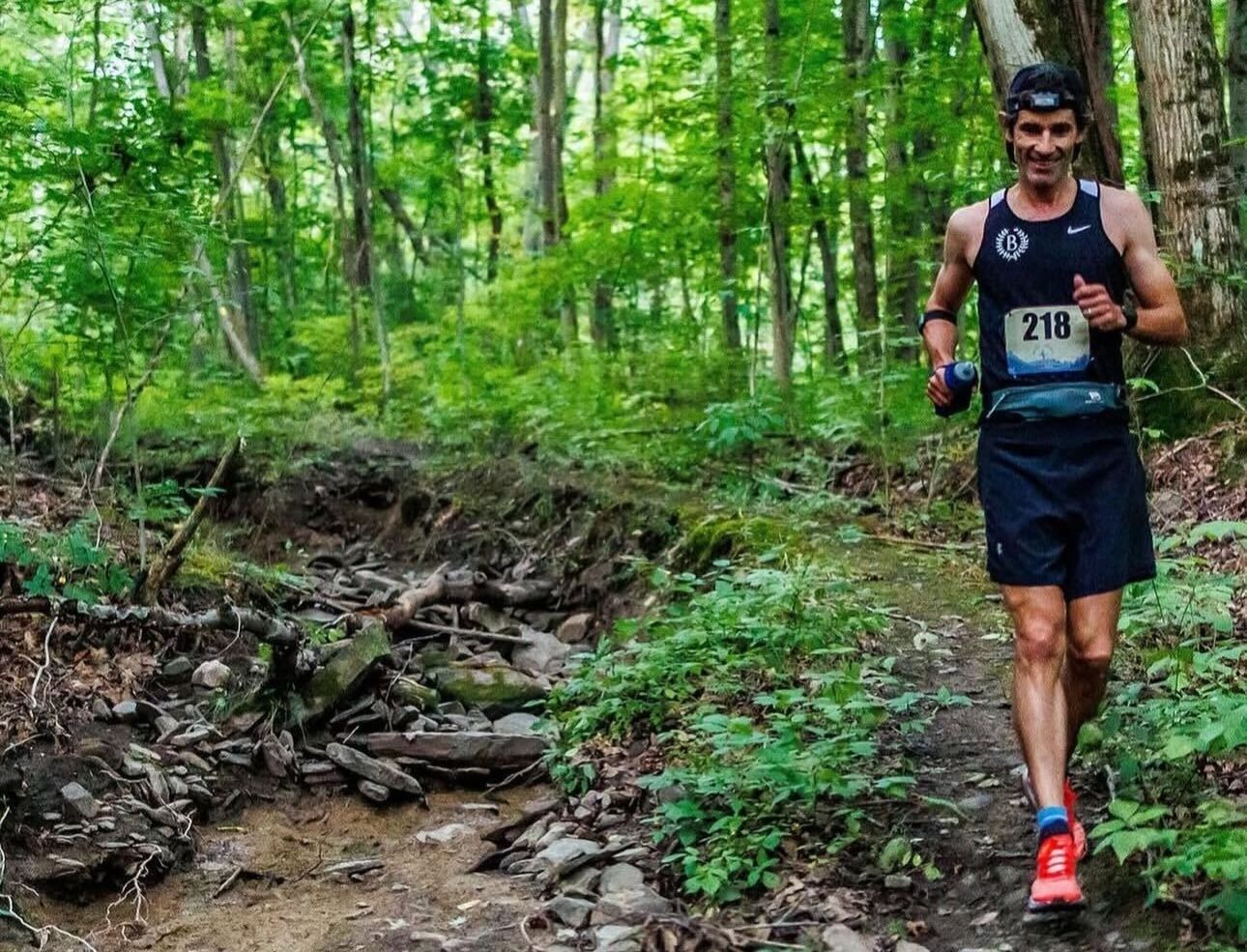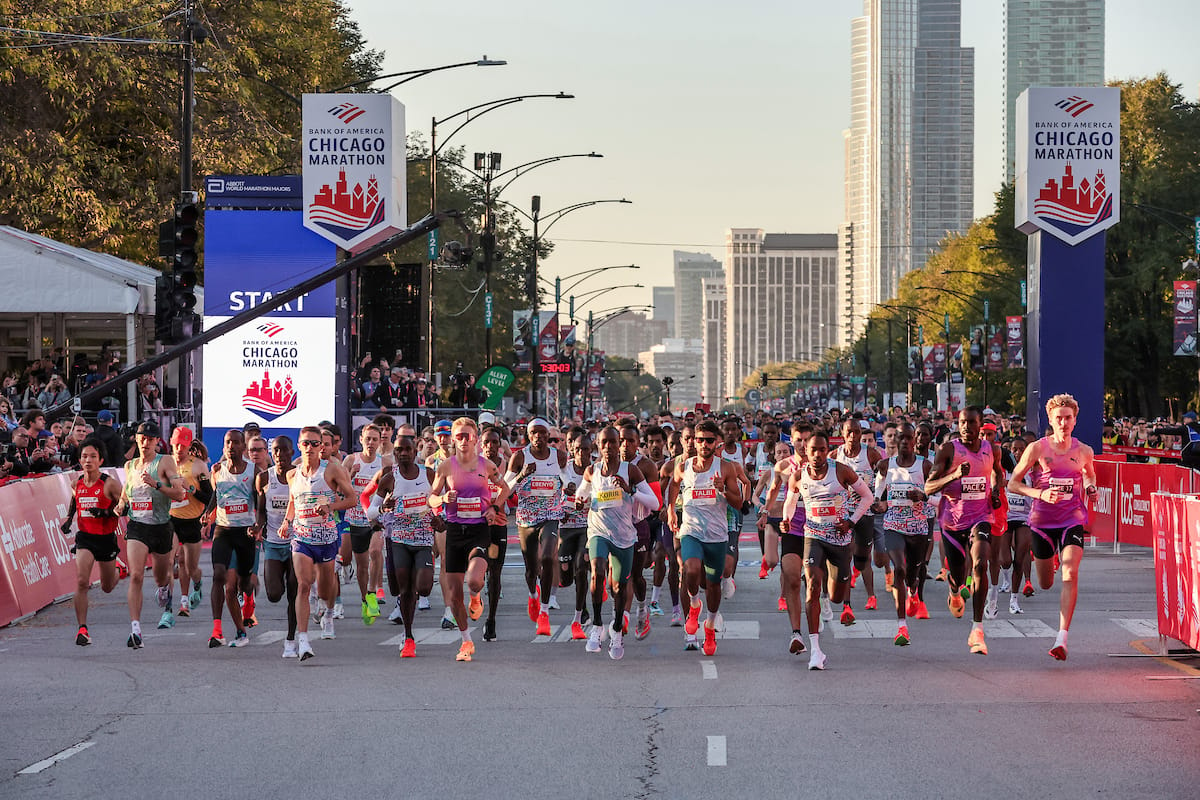
Hello! Welcome back to Footprint – and happy Friday.
I sat in the dark with a strong cup of coffee early yesterday morning, listening to wind rattle the windows and rain gather on the ground, bracing to go outside for a get-it-done run.
Ten miles were in order, according to a training plan drafted four months ago. But a storm had blown in, and the sun had yet to rise. It was England, in late October, so maybe the conditions should have been expected.
The upside was that I was in Cornwall. Running here, around its winding coastal path and steep country roads, past rugged beaches and billowing waves, feels like home – whatever the weather.
With a week until this year’s New York City Marathon, I recently spoke to a man who first watched the race aged seven. His experience that day helped spark a lifelong love of running; he has since run the race eleven times himself.
EDITION #29
📚 Nicholas Thompson, author of The Running Ground, on finding balance, chasing ambitious goals, and how running has shaped his life
⏱️ ULTRA RECORD
School teacher Sarah Perry set a new women’s world record in backyard ultra running – laps of 4.167 miles, every hour, for as long as possible – running 95 laps at Big’s Backyard Ultra Individual World Championships in Tennessee • Read
😮 MASTER STROKE
Maria Lindberg ran a huge personal best at the Chicago Marathon, becoming the first masters athlete to hit the qualification time for the 2028 US Olympic trials. “My life is so much more balanced now,” she told Fast People • Read
🧠 DEALING WITH DOUBT
Natosha Rogers ran a personal best of her own in Chicago, and was top American finisher. Even the greats face self-doubt, explains Steve Magness, who sets out how to take it along for the ride • Read
🔍 SCIENCE OF CHEERING
Which types of cheering actually help during races? Alex Hutchinson, preparing to support his wife, explored the science for Outside • Read
👀 SPURNING STRAVA
No one is paying attention to your Strava, writes Jenn Collins. No one gives a lick about your speed. We like to think of progress as linear: faster, farther, stronger, better. Sometimes it’s quieter • Read
A Gift That Opens The World

Courtesy of Nicholas Thompson
A few miles into the second half of next weekend’s New York City Marathon, Nicholas Thompson will take a moment. Coming off the Queensboro Bridge, after a mile of relative peace, every runner arriving in Manhattan will be greeted by a wall of noise.
Thompson will look beyond the barriers into the cheering crowd, and pick out the spot where he stood himself some four decades ago. He always does, each time he takes on the five boroughs.
“It’s a very emotional part of the race,” he said. “But it’s also particularly emotional, because that’s where I saw my dad.”
In 1982, Thompson watched as his father ran New York City. He handed him a replacement pair of running shoes and some orange juice, and cheered as he ran the fastest marathon of his life: just over three hours.
“Memory is mysterious. It’s not like a video,” he said in an interview. But he has a “very strong emotional memory” of that day, “which is sort of the feeling of love, and my excitement and pride.”
Thompson, a veteran journalist, CEO of The Atlantic, and American recordholder in the 50K for the 45-49 age group, has written a book – The Running Ground – about the activity that formed a throughline in his life, helping him navigate each twist, turn, and bump in the road.
It chronicles how he got faster during a period when many reluctantly accept getting slower as an inevitability. It explains how he tried to manage a sport that can take a lot – time, energy, headspace and more – and describes what it gave.
“I’ve found a way to balance it in my life, in a way I was able to run without huge external costs – in fact, in a way that I feel like my running doesn’t detract from the rest of my life,” he told Footprint. “It enhances the rest of my life.”
• • •
Life is complicated. This book tells the story of how one fundamentally simple act – and determined, disciplined and diligent efforts to master it – can help make sense of the world we find ourselves in.
“My father led a deeply complicated and broken life,” Thompson writes in the final stages. “But he gave me many things, including the gift of running – a gift that opens the world to anyone who accepts it.”
That gift is still delivering, according to Thompson. And the deeper he has been drawn into the sport, the greater his appreciation of its benefits has grown.
Thompson, 50, often speaks as fast as he runs. He stresses that he is a patient person, though, having learned over the course of his life not to allow emotions to get the better of him. He wondered recently when, and how, he picked up this skill.
“Patience is something you learn running, or you cultivate while running,” he said. “If you’re not patient when you’re running, you mess up your race, or you mess up your workout.
“Is that part of my personality before I started running? I don’t know. I can’t even remember… My personality affects my running. My running affects my personality. They’re now, like, a loop. You start to learn new things about yourself, even at this age.”
• • •
Drinking and running are “mirror opposites,” Thompson observes in the book. “One makes you feel great while you do it and dismal afterward; the other does the reverse,” he writes.
But there are also times, however rare, when running feels pretty great in the moment. Everything clicks into place. Thompson landed on four states that he deems to be bliss:
Meditation. The mind slows to focus on your surroundings – often up a mountain, or across a ridge, in Thompson’s case – and how your feet tackle the terrain. Not necessarily moving fast, but often pushing hard.
Flow. Out on the road, pushing hard, going fast and feeling strong. Your mind is active and present. “This is the state I dream about when I start to get into shape,” he writes.
Catharsis. Something has gone wrong in the world, or your life. Your mind is like “molten metal,” he says, and you run hard to heat everything up, before you can cool into a new shape.
Oneness. The hardest to reach – only at the end of a long race, for Thompson. Brain and body merge into one, perfectly-calibrated system. You’re moving exactly the way you want to.
Thompson’s journey into running began with his father: watching him run New York in 1982, and tagging along as he trained. It continues with his three sons, who now routinely watch their dad run the same race.
“Seeing someone you love doing what they love is a great experience,” said Thompson, who recalled how he felt watching his wife, Danielle, dance over the years.
“And there’s something particularly interesting about a child watching a parent run,” he added. They might struggle to muster an interest in spectating many sports, with rackets or whistles or clubs or points. “If I was the best masters tennis player in the world, they wouldn’t get it,” he said. “But if you’re running – and you’re, like, running – they get it.
“And so, it’s a way that a child can understand strength and vitality and lifeforce. That’s partly why it had such a powerful effect on me, watching my dad.”
In 2018, Thompson spent months working towards the dream of breaking 2:40 in the marathon. He realized it at the Chicago Marathon in October, allowed himself a few days to recover, and four weeks later headed to Staten Island, for the start of that year’s New York City Marathon.
“Under no rational reason should I have run it,” he said, of his second marathon in a month. “The only reason I ran it was my kids live in New York, and I wanted them to see me run when I was fast and strong.”
“Now they get to watch the decline,” he grinned.
Even if he slows, his commitment to running – and aspiration for what it can yield – has yet to wane. More experimentation in ultra-running is “in the cards,” including hopes to run the Western States 100-miler. More New York marathons will likely follow, including with his middle son, Zachary, as soon as he’s old enough to toe the line himself.
“And then, who knows? I’ll definitely keep running recreationally,” said Thompson. “Maybe I’ll keep going after records. Maybe I’ll be trying to run the Age 60-65 fastest 100K. Maybe not. It kind of depends on whether I get hurt.”
“I don’t know,” he added. “I love it for now, and I’m going to keep going as long as I can.”
The Running Ground: A Father, a Son, and the Simplest of Sports is out on Tuesday, October 28... Preorder here… Read an excerpt.

ONE LAST THING…
A few weeks before I made it back to Cornwall, trail runner Elsey Davis became the first person to run the circumference of the county. Over 6 days and 8 hours, she covered 384 miles.
This deep dive on her extraordinary run is well worth your time. She ran to raise money for Alzheimer’s Research, after her mum – who was at her side as she finished – was diagnosed with young onset Alzheimer’s disease.
“I have never been more broken,” wrote Davis, “but somehow the most whole I have felt in a long time.”
